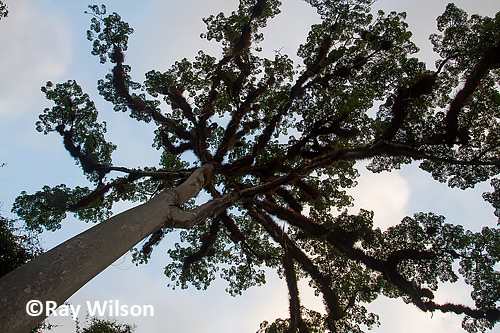
- Home
- Photography Tours
- Diary / Blog
- Galleries
- Foreign Trips
- Tasmania 2016
- NE Queensland 2016
- Western Alps 2016
- NE Spain 2016
- Australia's Wet Tropics 2015
- Australia's Top End 2015
- SW Australia 2015
- Switzerland 2015
- Andalucia 2015
- Belize 2015
- Australia 2014
- Switzerland 2014
- Belize 2014
- Bahama Islands 2014
- Switzerland 2013
- Ecuador 2012-2013
- Florida 2011-2012
- Vancouver Island 2011
- Australia 2010
- Peru 2008
- Bulgaria 2007
- Lesvos 2006
- California 2006
- New Zealand 2005
- Extremadura 2005
- Goa, India 2004
- The Gambia 2003
- About
Belize & Tikal
February-April 2014
Part 9 : Tikal, Guatemala
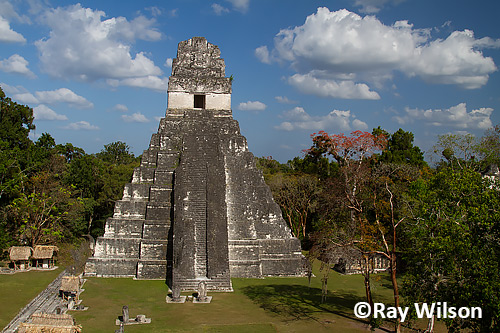
Temple I
The spectacular ruins of the pre-Columbian Mayan city of Tikal are situated about 40miles (64km) northeast of the town of Flores in the Peten district of Guatemala (about a 2 hour drive from the Belize border).
At its peak, between ca. 200 and 900AD, the city of Tikal was one of the largest and most powerful in the Mayan empire with a peak population living within a 25km radius of the centre in the region of 400,000 people. As population pressures increased at Tikal, intensive agriculture had to be employed more and more causing enviromental deterioration and a depletion of the soils nutrients which eventually led to crop failures and famine. Consequently, Tikal began to decline and by the end of the 10th century it was completely abandonded.
In the following millenia, the forgotten city was reclaimed by nature and the area transformed from one of completely deforested agricultural land to lush rainforest and lay undisturbed until the middle of the 19th century. In 1951, An area surrounding it encompassing 220 square-miles of land was declared as Guatemala's first national park.
Today, there are numerous excavated complexes and temples accessible to the public within the national park, with the Grand Plaza being the main attraction. This large open square has two large funerary pyramids built to comemorate the king, Jasaw Chan K'awil, and his wife. The tomb of the king, now known as Temple I (above photo), stands at a height of 45m (154ft) and towers above the surrounding forest. Temple II, where his wife was entombed, is only slightly smaller at a height of 38m (125ft).
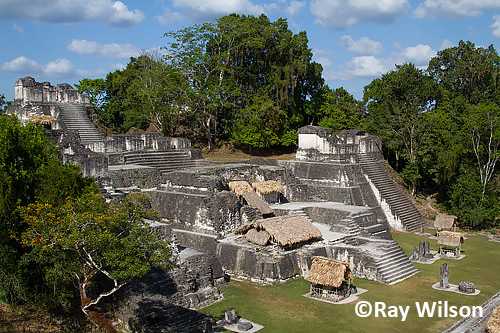
North Acropolis
Flanking Temples I and II, on the north and south sides, are two massive acropolises, of which the North Acropolis is the most studied structure in Tikal and houses the burial sites of numerous rulers.
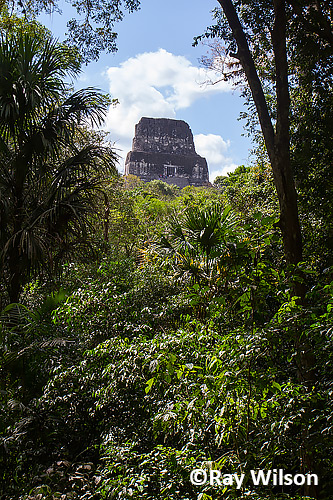
Temple IV |
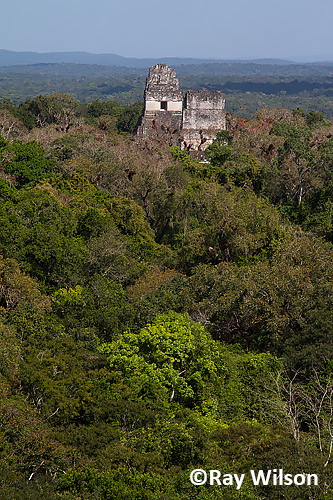
Temples I & II as viewed from the top of Temple IV |
A staircase up the side of Temple IV, which at 70m tall is Tikal's largest pyramid, allows you to get an eagle's eye view of the forest. Temples I, II and V can clearly be seen towering above the surrounding forest from here.
Kapok or Ceiba Tree (Ceiba pentandra)
Even the giant Kapok trees, revered by the ancient Mayans as being the holy tree of life, were dwarved by the main temples.
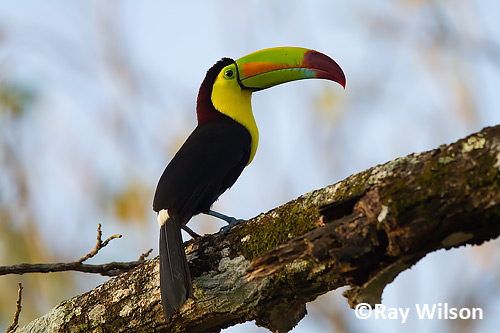
Keel-billed Toucan (Ramphastos sulfuratus)
WIldlife is abundant at Tikal and even around the main plaza you can see some good stuff. Keel-billed Toucans were regularly seen in the large Kapok trees and an Orange-breasted Falcon had even chosen to nest on Temple II itself and also frequently perched in the surrounding trees.
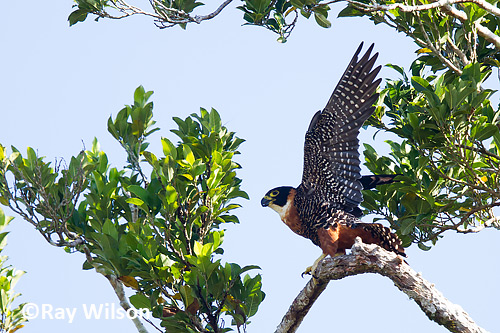
Orange-breasted Falcon (Falco deiroleucus)
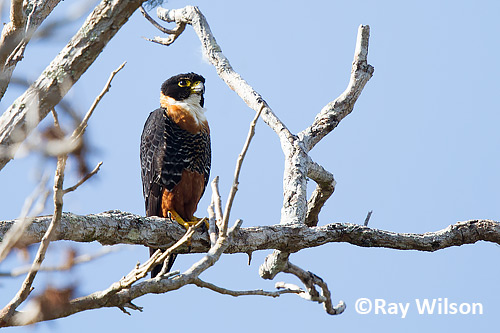
Orange-breasted Falcon (Falco deiroleucus)
A colony of Montezuma Oropendulas were noisily displaying next to their large pendulous nests by the Central Acropolis in the main plaza.
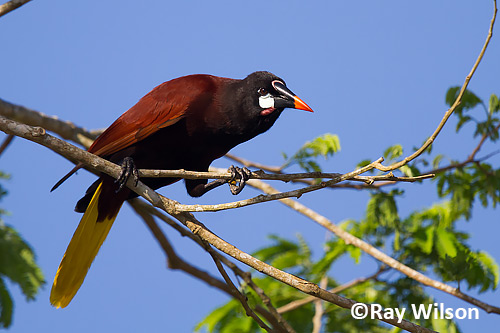
Montezuma Oropendula (Psarocolius montezuma)
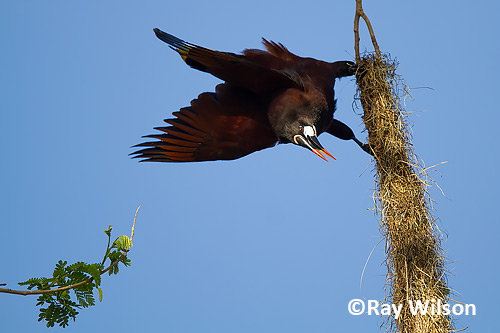
Montezuma Oropendula (Psarocolius montezuma) displaying
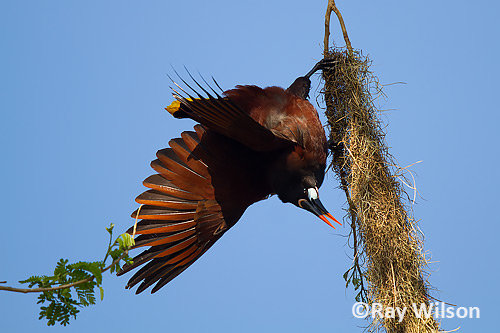
Montezuma Oropendula (Psarocolius montezuma) displaying
Below the Oropendulas, Giant Cowbirds patrolled the lawns for grubs and insects to eat, while keeping an eye out for an opportunity to slip into the Oropenula's nests to lay their clutch of eggs.
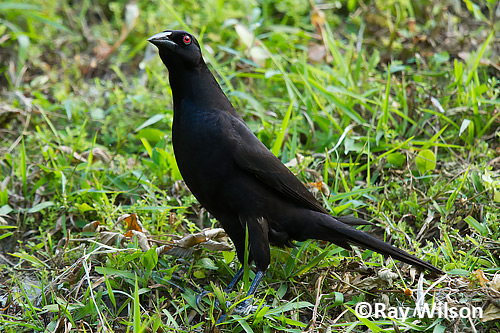
Giant Cowbird (Molothrus oryzivorus)
Large family groups of White-nosed Coatis were commonly seen around the main plaza and the hotel complexes searching for food dropped by the visiting tourists.

White-nosed Coati (Nasua narica)
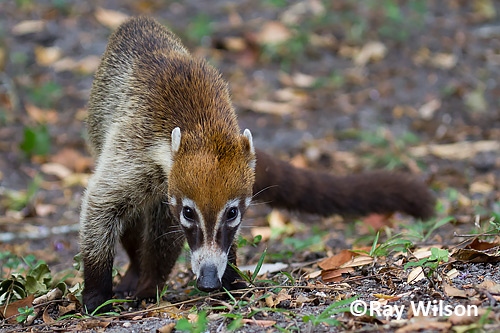
White-nosed Coati (Nasua narica)
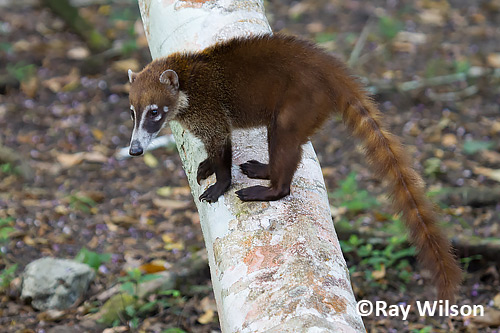
White-nosed Coati (Nasua narica)
In the surrounding jungle, a crashing noise in the foliage above your head usually signifies the presence of a group of Geoffroy's Spider Monkeys as they swing through the trees searching for fresh leaves to eat.
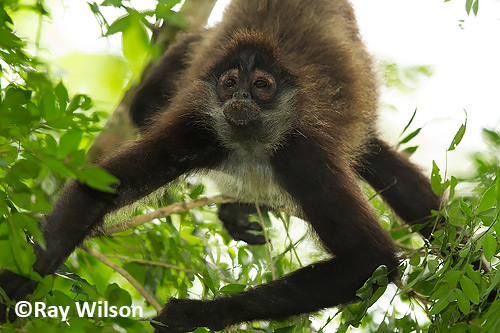
Geoffroy's Spider Monkey (Ateles geoffroyi)
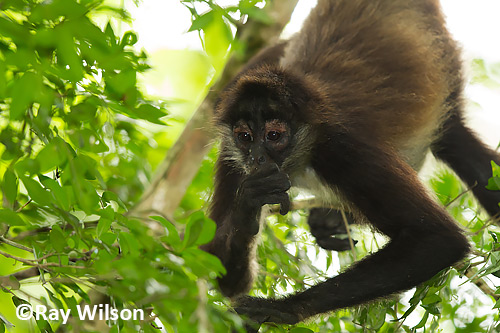
Geoffroy's Spider Monkey (Ateles geoffroyi)
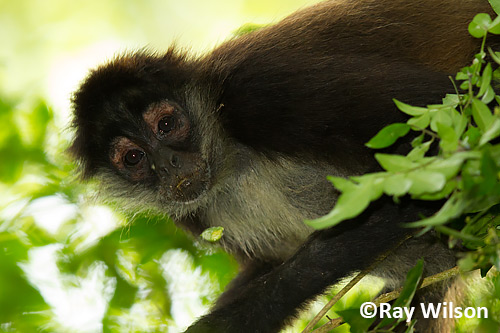
Geoffroy's Spider Monkey (Ateles geoffroyi)
Their habit of sitting motionless, makes Blue-crowned Motmots a bit harder to spot but their presence is usually given away by their distinctive call.
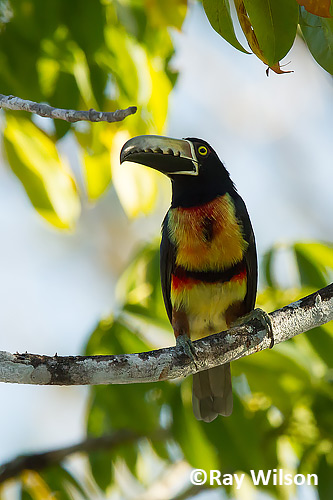
Collared Aracari (Pteroglossus torquatus) |

Blue-crowned Motmot (Momotus momota) |
Thrush-like Schiffornis, an inveterate skulker in the dense undergrowth of the forest floor, is a difficult bird to see, let alone photograph, but they can occasionally be coaxed out into the open by imitation of their 3 note whistle.
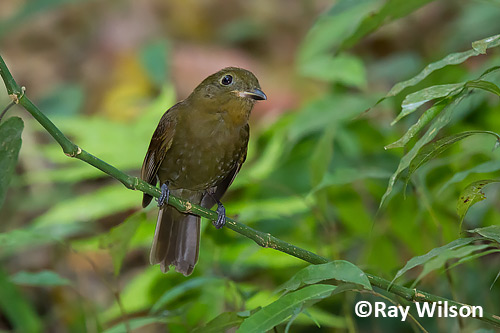
Thrush-like Schiffornis (Schiffornis turdinus)
The Masked Tityra below was busy constructing its nest in a dead tree by Group F one morning, while Brown-capped Flycatcher is a summer visitor and had just arrived back from its wintering grounds in South America.
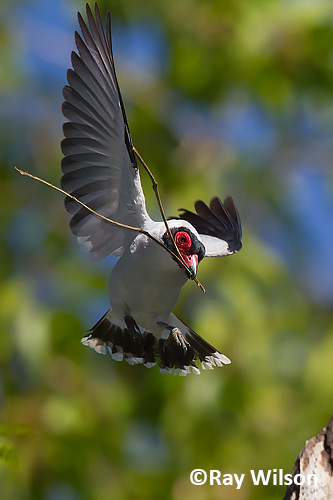
male Masked Tityra (Tityra semifasciata) |

Brown-crested Flycatcher (Myiarchus tyrannulus) |
Ocellated Turkeys are endemic to the Yucatan and probably the best place to see them is at Tikal where they are extremely tame.
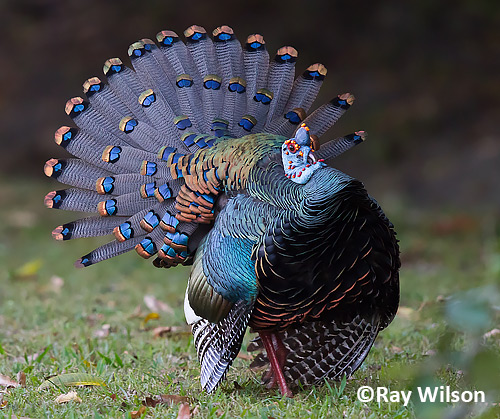
male Ocellated Turkey (Meleagris ocellata) displaying his eponymous ocellated tail to impress the female
Late one afternoon, the male shown above and below was vigorously displaying to his harem of females. Some of the females, in turn, seemed to be really keen on checking out his beautiful tail whose numerous eye-spots give the turkey its common name.
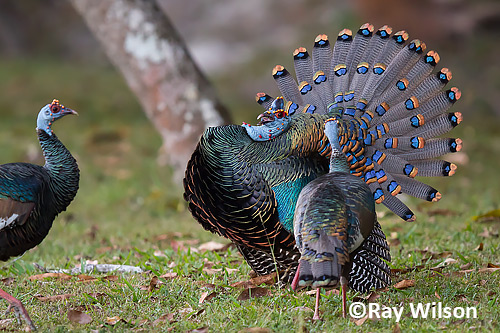
male Ocellated Turkey (Meleagris ocellata) displaying his eponymous ocellated tail to impress the females
Male Ocellated Turkeys have considerably more nodules on their featherless heads than the females. They are also far more intensely coloured than the female's.

male Ocellated Turkey (Meleagris ocellata)
The tameness of the Turkeys allowed me to get a bit creative with my compositions and it was pretty easy to take some full-frame close-up abstracts of their beautiful plumage.
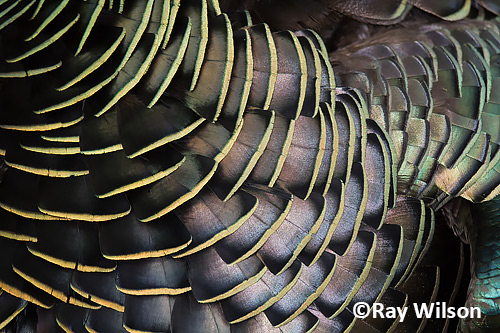
Ocellated Turkey (Meleagris ocellata)

Ocellated Turkey (Meleagris ocellata)
Ray Wilson owns the copyright of all images on this site.
They may not be used or copied in any form without prior written permission.
raywilsonphotography@googlemail.com
